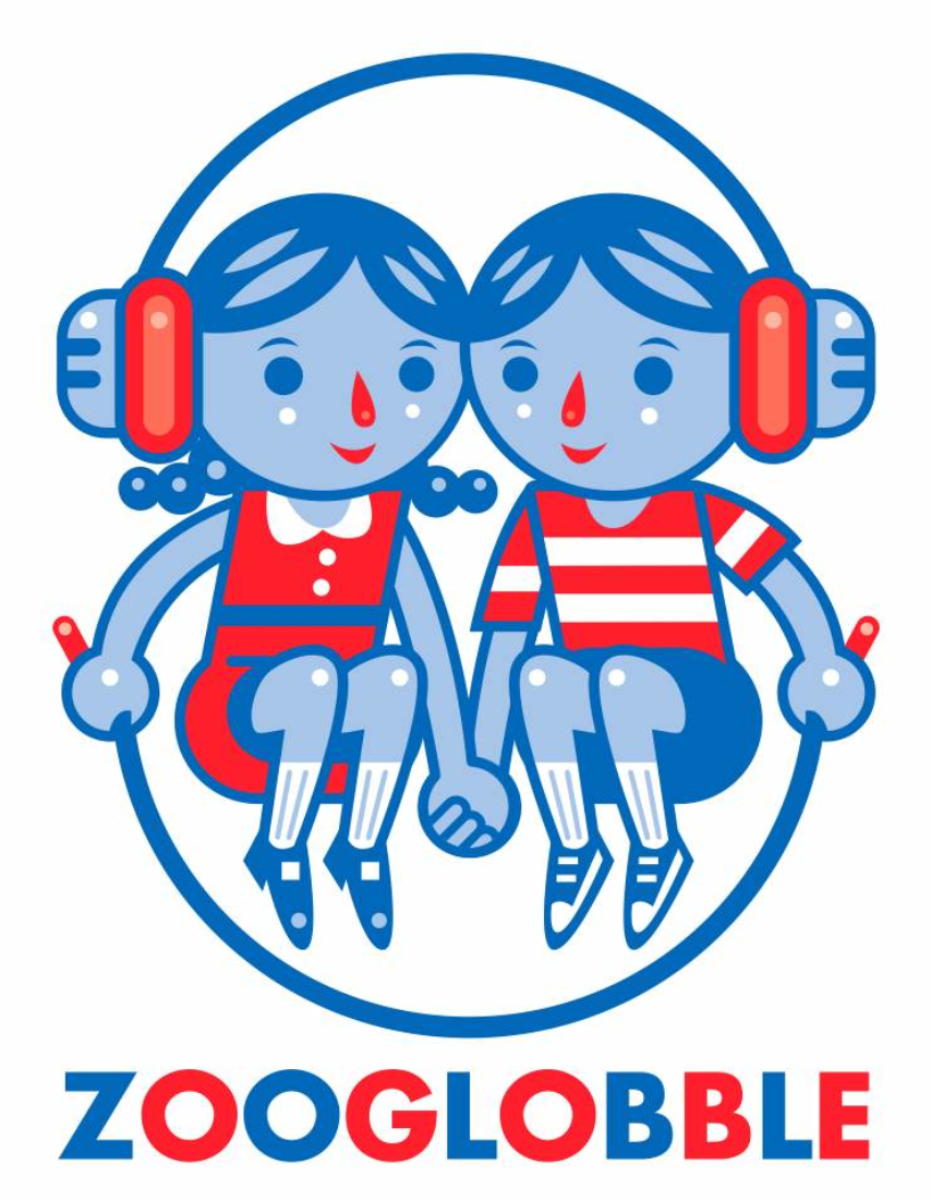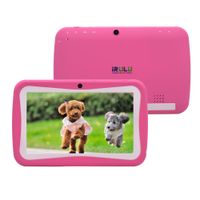 Ella Jenkins is a legend.
There are rising stars, stars, and superstars in the kids' music world, but Ella Jenkins is a flat-out legend, even though she might demur at the use of such a word.
Three weeks ago, just after her birthday, I talked with her about her start in the field of kids' music, her approach, and her long career recording for Folkways Recordings (now Smithsonian Folkways). Read on for her thoughts on all those things, plus find out one of her nicknames, how she chose the ukelele as an instrument, and be amazed by exactly how many languages she can use in one conversation.
*********
Zooglobble: The first thing I wanted to say is Happy Belated Birthday.
Ella Jenkins: Oh, thank you! I feel honored. I never tire of people saying it.
So you had a concert on Monday?
Yes. One of the branch libraries were celebrating their tenth anniversary. The person who had introduced me to that library, his name is Scott Draw. I had worked with him at another library, and he knew my birthday was on August 6th and he said, "That's when we're having our anniversary party, it would be nice if we could coordinate it. The Friends of the Library said they'd be happy to engage you if you could do a mini-concert."
And everybody sang Happy Birthday to you, I hope?
Oh, yes, they did that. We were trying to save it for the end, but somebody jumped the gun, I think [Laughs].
This is the fiftieth anniversary of your first album's release on Smithsonian Folkways [in 1957]...
I went to New York City in 1956 and met Moses Asch, who had faith in me and felt there was a possibility [of releasing an album]. He said, send me some material. I had actually brought him a demo disk with about four different songs. He said, you can probably do a recording, but you need to expand a bit, add a little instrumentation, and maybe we can do an album with you. But in the meantime, let's sign a contract, which let me know he was really serious.
That was in 1956, but in 1957 is when he released the album. It was a 10-inch [LP] and it was called Call and Response: Rhythmic Group Singing. That was my focus on how I would teach music, the call and response approach.
How did you settle on call and response as the primary way you wanted to teach music and lead and sing music?
Ella Jenkins is a legend.
There are rising stars, stars, and superstars in the kids' music world, but Ella Jenkins is a flat-out legend, even though she might demur at the use of such a word.
Three weeks ago, just after her birthday, I talked with her about her start in the field of kids' music, her approach, and her long career recording for Folkways Recordings (now Smithsonian Folkways). Read on for her thoughts on all those things, plus find out one of her nicknames, how she chose the ukelele as an instrument, and be amazed by exactly how many languages she can use in one conversation.
*********
Zooglobble: The first thing I wanted to say is Happy Belated Birthday.
Ella Jenkins: Oh, thank you! I feel honored. I never tire of people saying it.
So you had a concert on Monday?
Yes. One of the branch libraries were celebrating their tenth anniversary. The person who had introduced me to that library, his name is Scott Draw. I had worked with him at another library, and he knew my birthday was on August 6th and he said, "That's when we're having our anniversary party, it would be nice if we could coordinate it. The Friends of the Library said they'd be happy to engage you if you could do a mini-concert."
And everybody sang Happy Birthday to you, I hope?
Oh, yes, they did that. We were trying to save it for the end, but somebody jumped the gun, I think [Laughs].
This is the fiftieth anniversary of your first album's release on Smithsonian Folkways [in 1957]...
I went to New York City in 1956 and met Moses Asch, who had faith in me and felt there was a possibility [of releasing an album]. He said, send me some material. I had actually brought him a demo disk with about four different songs. He said, you can probably do a recording, but you need to expand a bit, add a little instrumentation, and maybe we can do an album with you. But in the meantime, let's sign a contract, which let me know he was really serious.
That was in 1956, but in 1957 is when he released the album. It was a 10-inch [LP] and it was called Call and Response: Rhythmic Group Singing. That was my focus on how I would teach music, the call and response approach.
How did you settle on call and response as the primary way you wanted to teach music and lead and sing music?Interview: Ella Jenkins
 Ella Jenkins is a legend.
There are rising stars, stars, and superstars in the kids' music world, but Ella Jenkins is a flat-out legend, even though she might demur at the use of such a word.
Three weeks ago, just after her birthday, I talked with her about her start in the field of kids' music, her approach, and her long career recording for Folkways Recordings (now Smithsonian Folkways). Read on for her thoughts on all those things, plus find out one of her nicknames, how she chose the ukelele as an instrument, and be amazed by exactly how many languages she can use in one conversation.
*********
Zooglobble: The first thing I wanted to say is Happy Belated Birthday.
Ella Jenkins: Oh, thank you! I feel honored. I never tire of people saying it.
So you had a concert on Monday?
Yes. One of the branch libraries were celebrating their tenth anniversary. The person who had introduced me to that library, his name is Scott Draw. I had worked with him at another library, and he knew my birthday was on August 6th and he said, "That's when we're having our anniversary party, it would be nice if we could coordinate it. The Friends of the Library said they'd be happy to engage you if you could do a mini-concert."
And everybody sang Happy Birthday to you, I hope?
Oh, yes, they did that. We were trying to save it for the end, but somebody jumped the gun, I think [Laughs].
This is the fiftieth anniversary of your first album's release on Smithsonian Folkways [in 1957]...
I went to New York City in 1956 and met Moses Asch, who had faith in me and felt there was a possibility [of releasing an album]. He said, send me some material. I had actually brought him a demo disk with about four different songs. He said, you can probably do a recording, but you need to expand a bit, add a little instrumentation, and maybe we can do an album with you. But in the meantime, let's sign a contract, which let me know he was really serious.
That was in 1956, but in 1957 is when he released the album. It was a 10-inch [LP] and it was called Call and Response: Rhythmic Group Singing. That was my focus on how I would teach music, the call and response approach.
How did you settle on call and response as the primary way you wanted to teach music and lead and sing music?
Ella Jenkins is a legend.
There are rising stars, stars, and superstars in the kids' music world, but Ella Jenkins is a flat-out legend, even though she might demur at the use of such a word.
Three weeks ago, just after her birthday, I talked with her about her start in the field of kids' music, her approach, and her long career recording for Folkways Recordings (now Smithsonian Folkways). Read on for her thoughts on all those things, plus find out one of her nicknames, how she chose the ukelele as an instrument, and be amazed by exactly how many languages she can use in one conversation.
*********
Zooglobble: The first thing I wanted to say is Happy Belated Birthday.
Ella Jenkins: Oh, thank you! I feel honored. I never tire of people saying it.
So you had a concert on Monday?
Yes. One of the branch libraries were celebrating their tenth anniversary. The person who had introduced me to that library, his name is Scott Draw. I had worked with him at another library, and he knew my birthday was on August 6th and he said, "That's when we're having our anniversary party, it would be nice if we could coordinate it. The Friends of the Library said they'd be happy to engage you if you could do a mini-concert."
And everybody sang Happy Birthday to you, I hope?
Oh, yes, they did that. We were trying to save it for the end, but somebody jumped the gun, I think [Laughs].
This is the fiftieth anniversary of your first album's release on Smithsonian Folkways [in 1957]...
I went to New York City in 1956 and met Moses Asch, who had faith in me and felt there was a possibility [of releasing an album]. He said, send me some material. I had actually brought him a demo disk with about four different songs. He said, you can probably do a recording, but you need to expand a bit, add a little instrumentation, and maybe we can do an album with you. But in the meantime, let's sign a contract, which let me know he was really serious.
That was in 1956, but in 1957 is when he released the album. It was a 10-inch [LP] and it was called Call and Response: Rhythmic Group Singing. That was my focus on how I would teach music, the call and response approach.
How did you settle on call and response as the primary way you wanted to teach music and lead and sing music?




